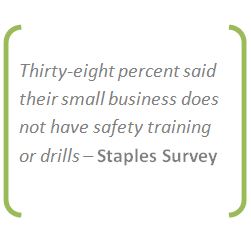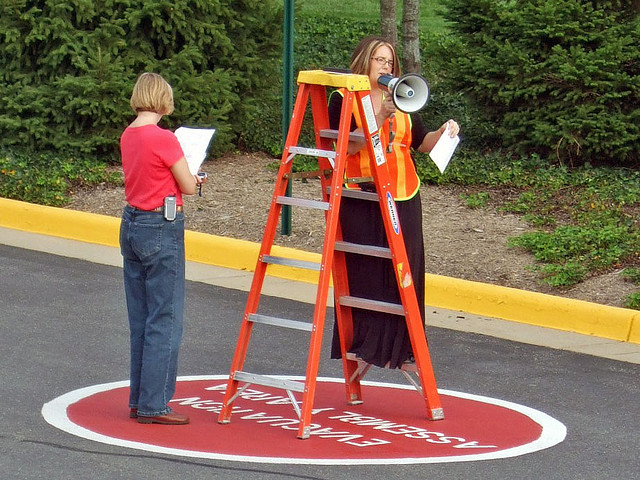How to make an evacuation plan for your small business
If you think an evacuation plan is only necessary for large-scale industries, multi-story buildings, and sprawling offices, think again. After OSHA fined JJ’s Restaurant in Kansas City for not having an adequate evacuation plan at the time of a gas explosion and fire earlier this year, businesses including restaurants in Kansas City are mulling over the need for evacuation plans.
Whether it is a gigantic workforce or a handful of employees, businesses need to have an emergency action plan. Michael Foust, a restaurant-owner in Kansas City, has set an example for other restaurateurs by adopting a plan of evacuation in his 32-employee restaurant.
Foust says he makes sure each of his employees knows what to do and where to go in case of emergency. For him, emergency preparedness starts from knowing where the exits are, who to call when there is an emergency, where the emergency numbers are, and how to perform basic CPR. Foust says, “Choking is one of the biggest hazards in a restaurant so they need to know how to do the Heimlich maneuver, but also with CPR.”
Small businesses are at a higher risk

Despite some efforts, the gap between “safety perception and actual preparedness,” remains wide. In the 2013 Staples’ Business Safety Survey, more than half of the employees of small businesses said they were not prepared for severe emergencies or that their companies did not communicate safety plans often. Though natural disasters came out to be the top concern for employees in the survey, businesses did not reassess their safety plans after recent disasters like Hurricane Sandy. Due to high costs or a lack of resources, small businesses have more to lose when an emergency arises. It only makes sense that they should be better prepared to deal with emergencies.
What does OSHA say about evacuation plans?
OSHA requires almost all businesses to have an Emergency Action Plan (EAP) at hand. Although businesses need to have their EAP in writing, an employer with 10 or fewer employees may communicate the plan verbally to the workforce.
According to the Center for Disease Control and Prevention, an EAP should cover evacuation routes, emergency phone numbers, emergency reporting and evacuation procedures, severe weather and natural disaster plan, and training.

With no emergency plan in place, confusion, injury, and property damage is inevitable. [Image courtesy: Yearzerosurvival.com]
Prepare for an emergency evacuation
Determine conditions that would necessitate an evacuation. Hazards typical to your business, vulnerabilities of the building your business is located in, weather conditions, and topography are some things to consider while preparing an evacuation plan. Contact local emergency officials to ascertain dangers surrounding your workplace environment.
Plan
Designate a person (evacuation warden) who has the authority to order an evacuation. Create a chain of command so that others are authorized to act in case the designated person is not available. Appoint at least one evacuation warden for every 20 workers. Also, determine who is responsible for providing an all-clear or return-to-work instruction. Train employees to perform rescue or medical duties during crisis. Educate them about how to assist people with disabilities and those who do not speak English during an evacuation.
Prepare
Write down, distribute, and practice evacuation procedures. Keep copies of site maps with your crisis management plan, along with other important documents, in your emergency supply kit and at an off-site location. Post building and site maps at strategic locations in the facility with exit and emergency routes clearly marked. Install signs to identify and clearly mark entry-exit points throughout the building. Establish a warning system (like a fire alarm) and test these systems frequently. Install emergency lighting or use flashlights in case of power cut.
Practice
Account for all the occupants in your facility including the visitors by maintaining a sign-in register. This will help you perform a head count later on at the assembly area. Select a primary assembly area near your facility and a secondary assembly area in case you have to move farther away. Ensure that the assembly site is away from traffic lanes and is safe for pedestrians. Conduct employee training, exercises, and drills regularly. Once you reach the assembly point, account for all workers, visitors and customers through a head count, roster, or checklist.

Evacuation warden giving an all-clear instruction [Image by Joe Loong]














